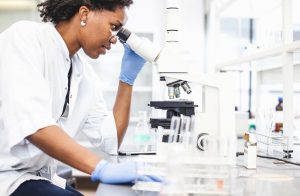
When not feeling well, FLASS sarcoidosis Patients can follow-up online.
Diagnosing Sarcoidosis is notoriously difficult. You need only to glance at the list of symptoms on our FLASS Patient Primer Page: to understand why the Sarcoidosis is often misdiagnosed or untreated in many patients. In fact, we suggest you read or review that FLASS page of general sarcoidosis information before continuing with this blog.
Basic to the understanding of sarcoidosis is that it is an inflammatory disease. Thus we know it can manifest in any system or any organ of the body. Moreover, it can target two different systems or more simultaneously, causing a wealth of confusing symptoms.
FLASS: Meeting the Diagnostic Challenge of Sarcoidosis With Experience and Expertise
The challenge of diagnosing sarcoidosis involves the systematic elimination of other causes of the patient’s symptoms. In this article, we will be announcing a recently released University of Illinois research study in Chicago. Their study could eventually improve the quality of the lives of patients with a cardiac sarcoidosis diagnosis.
And the new testing methods could improve our chances of diagnosing sarcoidosis in time for more effective treatment. So, read on and you will soon discover some good news for patients with cardiac sarcoidosis, and perhaps for sarcoidosis of any type. However, first we will focus on a cycle of cellular behavior, and some of the traditional sarcoidosis tests FLASS physicians might utilize for diagnosing this condition:
Diagnosing The Vicious Cycle of Sarcoidosis
Like FLASS, most research scientists believe the disease is relies on an unusual immune response:
1. A trigger, such as a substance in the air, alerts the immune system.
2. The body would normally send out cells from the immune system to go fight the foreign intruder at the site of its trespass.
3. However, in a body with sarcoidosis, an extraordinary misdirection occurs. The fighter cells don’t fight; they just cluster together into lumps called “granulomas.”
4. Studies are continuing to investigate bacteria, genetics, fungi and other possible sources that might trigger this unique reaction, but there is as yet no definitive answer.
5. FLASS has seen this condition disappear and reappear in an inexplicable manner of the course of years in a patient’s life. However, we have also seen it simply disappear in some cases, never to return.
Typical Testing Which Might Result in a Sarcoidosis Diagnosis
Some of the basic tests for sarcoidosis simply help your doctor to confirm that your symptoms do not proceed from another disease. Your FLASS physician might order any

Diagnosing sarcoidosis includes meticulous laboratory testing.
of the following to help in your diagnosis. He will assemble a meticulous medical history, conduct a physical exam and most likely order some laboratory work. Tests typically include:
- Chest CT scan and chest X-ray. In fact, sometimes a different condition is suspected until an x-ray reveals the tell-tale existence of granulomas.
- Blood Tests that will designed to reveal abnormalities in several vital systems.
- Pulmonary function testing. We need to know not only about the look your anatomy but the level at which it is working.
- Special urinalysis and blood tests for calcium levels are common when we consider this disease. Elevated calcium might indicate difficulties in the urinary system.
- Your FLASS physician might order an echocardiogram or fit you with a Holter monitoring device to check out your heart.
- CT scans , PET scans, and MRI scans
Finally, its time to reveal the absolute definitive test which justifies a definitive diagnosis of sarcoidosis: biopsy. A biopsy simply means the taking of a tiny amount of tissue which we examine microscopically. At FLASS we usually take these cells from a lymph node, a lung, or the skin. Unlike the tests on the above list, a biopsy is an invasive procedure. FLASS physicians would never order this procedure casually, but only to attain a definite diagnosis. Thus, with a definitive diagnosis, the patient and healthcare team can choose options for the proper treatment.
A Revelation from the University of Illinois at Chicago: Big News for Cardiac Sarcoidosis Patients
A team of researchers at the University of Illinois recently set out to prove that physicians should monitor patients with cardiac sarcoidosis for sarcoidosis lesions in other organs. Amazingly, the scientists discovered that 40% of the patients in the study actually had sarcoidosis lesions in other organs in addition to the ones in the heart.
Not only were these findings statistically significant, but the testing the scientists used was a non-invasive FDG PET-CT imaging test—in patient’s language, a very, very fancy x-ray.
We challenge you to ponder and contemplate what simple, non-technical aspects of the test they could change in order to sharpen the images for better examination of the patient’s bodies—until Part 2 of our coverage of this topic in our next blog. We promise you’ll be surprised at the simple but innovative thinking of the University of Illinois research team.

